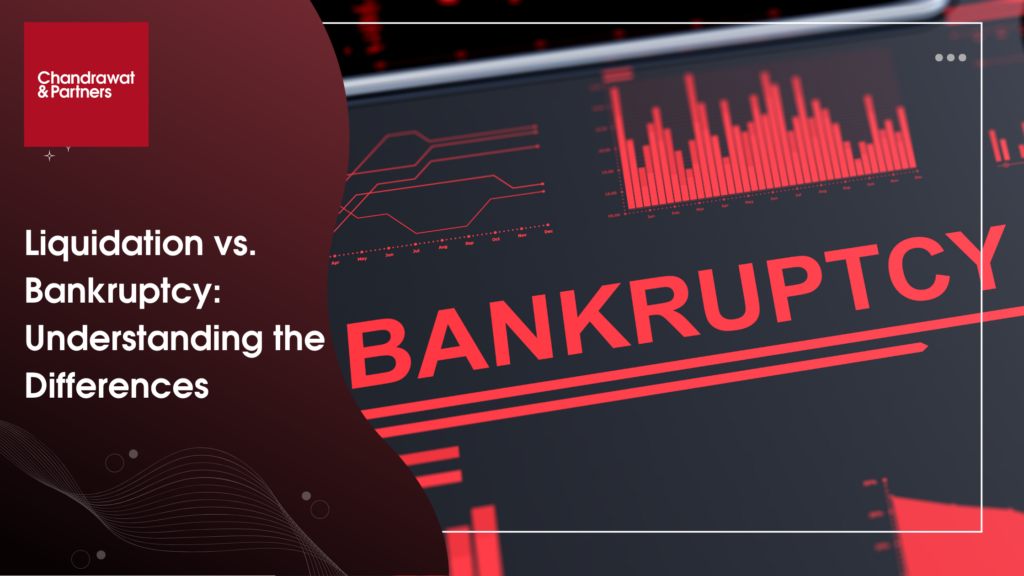
Liquidation vs. Bankruptcy: Understanding the Differences
Introduction
In the realm of business and finance, terms like liquidation and bankruptcy are often used interchangeably, but they actually represent distinct processes with different implications. Understanding the differences between liquidation and bankruptcy is crucial for business owners, creditors, and stakeholders alike
LIQUIDATION
The process of closing up a business and transferring its assets to shareholders and creditors is known as liquidation. It usually happens when a business can’t pay its debts or becomes bankrupt. The company’s assets are sold under the direction of a liquidator, and the revenues are utilised to pay off creditors according to a predetermined priority list. Any money left over after paying creditors is divided among shareholders in accordance with their ownership shares.
IMPLICATIONS OF LIQUIDATION
- Creditor Repayment: Liquidation prioritizes the repayment of creditors, ensuring that they receive a portion of the company’s assets based on their claims.
- Dissolution of the Company: Once the liquidation process is complete, the company ceases to exist as a legal entity, and its operations are terminated.
- Loss for Shareholders: Shareholders typically bear the brunt of losses in liquidation, as any remaining funds after creditor repayment are distributed to them.
BANKRUPTCY
Bankruptcy is a legal procedure that enables people or companies to file for debt relief when they are unable to make payments. It shields the debtor from creditor proceedings like lawsuits and asset seizure while offering a formal framework for debt restructuring or payback. A court oversees the bankruptcy process, which can lead to the debtor reorganising their finances or liquidating assets to pay back creditors.
IMPLICATIONS OF BANKRUPTCY
- Debt Restructuring: Bankruptcy may allow debtors to restructure their debts, renegotiate payment terms, or develop a repayment plan based on their financial circumstances.
- Protection from Creditors: Filing for bankruptcy triggers an automatic stay, halting creditor actions such as debt collection lawsuits, wage garnishments, or foreclosure proceedings.
- Possibility of Rehabilitation: Bankruptcy offers the opportunity for debtors to rehabilitate their finances and emerge from the process with a fresh start, free from overwhelming debt burdens.
WHEN TO CHOOSE LIQUIDATION OR BANKRUPTCY
The decision to pursue liquidation or bankruptcy depends on various factors, including the financial condition of the company or individual, the extent of debt, and long-term viability prospects:
Liquidation may be appropriate for companies with no prospect of recovery, where selling assets and distributing proceeds to creditors is the best option.
Bankruptcy may be suitable for individuals or businesses seeking relief from debt while preserving their operations and assets through restructuring or repayment plans.
Conclusion
In can be concluded that liquidation and bankruptcy are distinct processes with different implications for creditors, debtors, and stakeholders. While liquidation involves winding up a company’s affairs and distributing assets to creditors, bankruptcy offers a legal framework for debt relief, restructuring, and protection from creditor actions. Understanding the differences between these processes is essential for making informed decisions in the face of financial distress.
For more information or queries, please email us at
[email protected]
Key Contact

Surendra Singh Chandrawat
Managing Partner

